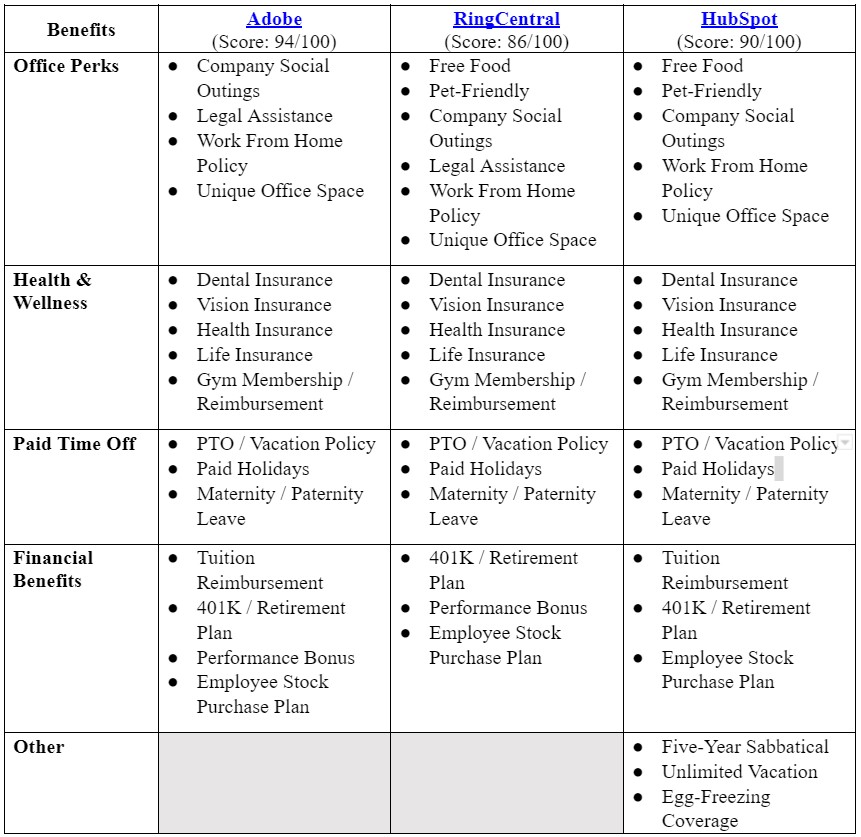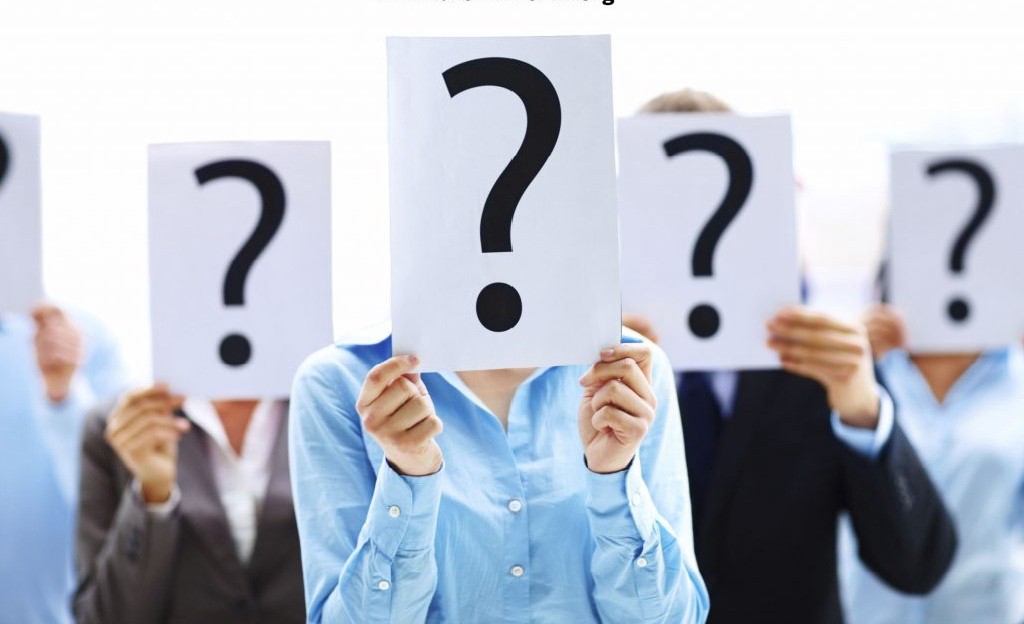
What comes to mind when you hear the term “happiness” at a workplace? Is it about getting a good salary, being rewarded frequently, having a reasonable workload, or working with great people?
Would all of the above be enough to make employees love their job and be eager to walk into the office every day? The truth is that every company in the world would like to have happy employees. However, many are too focused on profits and ROIs, and not enough on how their people are doing and feeling.
SnackNation shared shocking employee happiness statistics, which show that it’s considered a major factor in a company’s success and high earnings, such as:
This goes to show how employees can be valuable assets to a company if they’re treated well and have a positive attitude toward the company. It’s therefore important to recognise that they are an integral part of the business’s growth.
Unfortunately, according to Gallup’s State of the Global Workplace, only 15% of employees are engaged at work. This means that 85% of employees are either dissatisfied with their workplace or are merely doing the bare minimum to get through the day.
Worse, a study conducted by researchers at Ohio State University discovered that people who are dissatisfied with their jobs in their 20s and 30s are more likely to have sleep, anxiety, and depression problems later in life.
It stands to reason that happiness and productivity have a lot to do with one’s mental health. That’s why well-balanced people are more productive employees, whereas those who aren’t will find it difficult to be satisfied with their job. However, it’s a good idea to figure out what’s causing the unhappiness and dissatisfaction, and then only figure out how to make things better.
It could simply be a matter of how things are going at work. There’s a saying, “People don’t leave bad jobs; they leave because of bad bosses and poor management who don’t appreciate their value”. That’s why it’s no surprise that YouGov discovered that 64% of employees would prefer a low-paying job they enjoyed over a well-paying job they despised.
Having said that, it’s clear that upper management bears the most responsibility for employee happiness and love for their workplace. There are numerous tips available, but here are a few to get you started.

Happy workers are those who attain a perfect balance between their personal and professional lives. By allowing flexibility, such as a work-from-home policy, flexible working hours, sabbatical leaves, and unlimited paid time off (PTO), employees can better manage their time. What’s most important is that your employees complete their tasks by the deadline. Everyone has the right to some freedom, even at work, don’t you think?
Making a workplace enjoyable begins with the people, particularly the management. How can employees have fun when management is stringent and unpleasant to be around? Make fun a part of the workplace culture so that everyone enjoys coming to work. Consider adding an entertainment room, a workout area, a snack and food bar, and a chillax corner, to name a few. The possibilities are limitless, so get started right away.
This may not apply to all industries (though it should be!). The management should look past the body inks, peculiar hairstyles, and unusual outfits because everyone deserves a fair chance regardless of appearance. Not only management but all other employees in the office should be expected to accept everyone exactly as they are. It’s time to say ‘sayonara’ to those judgmental thoughts and behaviours.
To gain the trust of your employees, you must first believe in them. When there is trust in the workplace, employees can benefit from a culture of honesty and mutual respect among co-workers. As a result, they are more likely to work hard and remain loyal to the organisation. With trust comes job security, which aids in lowering turnover.
Nobody is born or grows up the same way. We’ve all been through different things in our lives, and while the experiences may be similar, they are never the same. Some may have faced adversity since they were children, have been bullied throughout their lives or other situations. Regardless, you as employers should be aware of the employees’ background and position. This way, there’ll be a sense of understanding and you can make better decisions when determining what makes employees happy.
This is never easy because every employee has their own mind. It’s, however, doable if management can provide clarity on what should and must be done. You should always share the company’s vision and mission with employees so they understand where the company is going. Once everyone is aligned on the goals, it’ll be easier for employees to fall in love and be happy at work, because they understand their role in the company.
Yes, upper management has veto power over what happens in and around the company. Even so, whatever changes occur in the company that involves or will impact the employees, it is best to keep them informed. The world of work is rapidly changing, and, understandably, many businesses are evolving to improve, but bring your employees along with you. Take them on the same path to betterment.

You could create a positive work environment by encouraging team collaboration, listening to everyone’s ideas, promoting diversity, and maintaining open lines of communication, among other things. When a workplace gives off positive energy, all employees will feel the same way, all employees will be positive every time they come to work. It’s one of the best ways to get them to work well together and appreciate what they have. Above all, positivity makes employees feel valued, respected, and happy.
Most employees want to advance in their careers and be in a better position than they were before. To emphasise the significance of this, Maria Kraimer, a business professor at the University of Iowa, spoke with Business News Daily and shared her thoughts on career paths.
She said, “We found that providing developmental support, such as training opportunities and career mentoring, to employees who do not believe there are attractive career opportunities for them within the company led to such employees leaving the organization. It’s critical for businesses to have regular career planning discussions with their employees. As part of training and development, make sure employees are aware of the different types of career paths or job opportunities throughout the company.”
Toxic behaviour permeates company culture and, if not addressed early, can destroy an organisation. Employers must understand what constitutes toxic workplace behaviour and how to appropriately deal with such situations. This includes everything from backbiting and bullying, to gossiping and bootlicking. Try to identify any issues as soon as possible and take necessary action. When everyone gets along well with one another, the workplace becomes a better and happier place.
That’s what we teach young people, but sadly, in the adult working world, there are still people (read: bosses) who fail to thank and appreciate their employees’ efforts. Roofstock co-founder and CEO Gary Beasley spoke to Business News Daily about the importance of saying thank you in an organisation.
He said, “In my experience, employees rarely become unhappy or leave solely over money. When they do become disenchanted, it is usually because they don’t like their boss, aren’t engaged or feel like they have stopped learning. Having a positive culture and workplace environment helps a lot, as it encourages teamwork and communication, which increases engagement and opportunities for teammates to learn from each other. We also do periodic shoutouts to people at all levels of the organization for great work or superior effort. These kudos cost nothing but provide important public recognition for a job well done, effectively compensating people in the form of social currency, which is highly valued.”
When employees are required to be at their desks from 9 a.m. to 6 p.m., it can be stressful and exhausting. On a busy day, some employees may not even have time to eat lunch and maybe compelled to work until late at night. If you think that’s work determination, you’re mistaken! If you notice your employees working until they drop, encourage them to take a short break away from their desks. It’ll provide them with the opportunity to recharge, relax, and avoid work burnout. Better yet, ask them how you can assist them in making their tasks less strenuous.
We rarely come across businesses that do not provide any benefits to their employees. But, if you’re only offering the basics, how does that distinguish your organisation? Aside from the standard medical insurance, retirement plans, dental, and vision coverage, you could consider providing a broader range of benefits. According to PeopleKeep, this includes paid family leave, a four-day workweek, student loan assistance, pet-friendly offices, and fitness perks. The more benefits there are, the happier the employees will be.
Communication is essential for determining whether or not there is a problem at the company as well as receiving feedback on how to improve the workplace. Allow your employees to express themselves by conducting an office performance survey or speaking with them individually or in groups. Inquire about what motivates them to stay at the company and what needs to be improved or implemented. Ensure that information is obtained from employees at all levels. Simultaneously, as management, you must be open and accepting of any criticism or comments.

Assuming you’ve put all of the suggestions into action; how will you know if they’re effective? One method is to conduct an employee performance review, which can be done yearly or as needed. This is the time when you will be able to ask all of the important questions while evaluating your employees’ happiness and performance at work.
The D’Amore-McKim School of Business at Northeastern University shared five reasons for conducting staff reviews, which are as follows:
Aside from acknowledging the employees’ performance status, the review session allows management to inquire about the employees’ well-being. Where relevant, tell them how well they’re doing and ask if they’d like a raise. This is significant because failure to provide a salary increase without proper justification can harm employee morale and worsen employee turnover.
The concern is consistent with the findings of CareerAddict.com, which found that the three most common reasons for employees quitting their jobs were a lack of career advancement opportunities, low pay, and the absence of a salary pay raise.
Similarly, Achievers discovered that 54.2% of employees would leave their job for a pay raise, career advancement (37.8%), and better corporate benefits (20.7%).
You now understand the significance of performance reviews and the various things that can be done to increase employee happiness and make them fall in love with the company. But, where is the evidence that they would work?
The top three large companies, according to the Comparably Awards for Companies with the Happiest Employees 2021, are:
So, how do they do it? Given that having great perks and benefits is one of the factors that make an employee happy, let’s take a look at their score in this category and what they offer.

That’s a pretty impressive list of benefits they have there; no surprise they are in the top three of having the happiest employees!
As an employer, the best and simplest thing you can do to make your employees happy and love the company is to always ask for feedback. There are numerous aspects you’ll be able to uncover, such as what employees want more of, what should be changed, what new things should be added, and many others.
At the end of the day, remember that love works both ways. Employers can’t expect employees to love them if they don’t show love towards the workers, and vice versa (it’s a chicken and egg situation!). Then again, you could be doing everything possible, but some employees are simply impossible to please. That’s perfectly fine because no one is perfect, and the important thing is that you gave it your all!

Employee turnover is a major source of concern for many businesses because it threatens their reputation, productivity, and performance. While different companies may describe and categorise employee turnover differently, the Cambridge Dictionary defines it as “the rate at which employees leave a company and are replaced by new employees.”
Turnover can generally be classified into two types:
There could be a variety of factors why employees may leave departments or organisations, including burnout, a negative work environment, lack of growth opportunities, a competitive offer, and negative feelings towards management.
It has since been discovered that the most common reason for employees leaving their jobs is due to a toxic work environment. According to the Society for Human Resource Management’s report, ‘The High Cost of Toxic Workplace Culture‘, 58% of employees who quit blamed their managers, and the turnover had also cost U.S employers more than $223 billion!
To gain a deeper understanding of this crucial problem that’s causing employee turnover, let’s take a closer look at toxic workplace issues and what can be done to create a better workplace.
Toxic workplaces are marked by incompetent leadership, poor management skills, a weak rule of ethics, and poor communication. If these disruptions occur regularly, they could have a detrimental impact on both your physical and mental health.

A study of the UK workforce discovered that toxic cultures caused employees to be less engaged with their jobs, to suffer from anxiety as a direct result of workplace bullying, to seek therapy as a result of an issue they encountered at work, and to call in sick as a result of problematic behaviour they witnessed/experienced at work, among other things.
This is proof that when your job, your working environment, and the people you work with are all negative and distressing, they can begin to affect your life and lead to emotional exhaustion.
Moreover, according to Jeffrey Pfeffer, a professor of organisational behaviour at Stanford Graduate School of Business, the link between poor health and poor workplace conditions is “significant, profound, and has been documented over decades.” He also believes it’s a major health crisis, resulting in 120,000 extra deaths in the United States each year!
The hostile workplace and toxic culture will also result in low morale, conflict, negative outcomes, low productivity, inappropriate behaviour, unfair treatment, severe tension, and high turnover among employees. That being said, numerous situations can arise, causing employees to leave in search of a better opportunity.
There are plenty of examples of toxic workplace culture, ranging from office rumours and cliques, to misinformation and poor management. Be it managers, co-workers, and low-level employees, they all have the potential to create that unpleasant working environment.
To see if you’re dealing with toxic work issues, check out the following dysfunctional scenarios.

No matter what you do, whether it’s right or wrong, your boss will always find a way to negatively criticise you, making you feel down the majority of the time at work. To top it off, when he asks you to redo something or is dissatisfied with your work, he screams his lungs out at you until everyone outside his room can hear him.

You were never given a proper job description when you started, so you always do what’s expected of you. Then, without realising it, you have multiple superiors telling you to do this and that, and you end up with so many tasks that aren’t a priority or even related to your job role.

You did your best to finish and complete all tasks assigned to you, but you received no response after submitting your work. Worse, you only get negative feedback, and are asked to do the work again without any proper instructions. So, you end up figuring everything out on your own, and when you finally get it right, you get no credit at all.

There are employees of various ages and seniority levels in every workplace, but it becomes an issue when you constantly have to back down and give in to those who are older and/or have higher seniority than you. A junior executive employee shared, “Even though my senior executive is new and still needs to learn about what’s going on at the company, we can never agree on what’s best because the senior always feels like she’s in charge of EVERYTHING!”

The management or human resources department never provided a clear career path or opportunities for employees to advance up the ladder. Everyone is just doing the same thing over and over again, and no one is being sent to training to become better or to improve themselves.

No one knows the exact ratio for good work-life balance, but you’ll know it’s a problem when it begins to affect your health, relationships, and social connections. Some bosses believe that employees must answer to them at all times, even after office hours and on weekends/public holidays, especially now that some employees are working from home.

Everywhere you go in the office, you’ll hear people talking about other employees, departments, management, and even you. You’re also worried about offending anyone or saying anything inappropriate because anyone in the office could start snitching on you to the bosses behind your back. Simply put, no one in the office can be trusted.

Employees can’t do their jobs properly if their bosses are giving them contradictory orders that are never in sync. For example, you’re supposed to be working on a company brochure but got different instructions from the marketing director, the content lead, and the CEO. When something went wrong, everyone started blaming and pointing fingers at you for creating the brochure incorrectly.

When people only want to work with those close to them and refuse to collaborate with others who are not on the same page, the working environment has become toxic. You’ll notice certain cliques or groups at work who will only hang out with each other during office hours and even after work.

The company implemented a few toxic workplace policies that appear to be overly strict and outdated, such as a strict dress code, non-flexible working hours, stringent medical leave policies, and making side jobs illegal. This can create a toxic environment by making employees feel unproductive and non-compliant.
Every employee enjoys working in an environment that inspires and motivates them to achieve their full potential. Regrettably, this isn’t always the case. The list below will help you identify the different signs of a toxic workplace environment:
Every individual is accountable for improving the workplace so that everyone can work effectively and in harmony. However, as the people in charge of all employees, the HR department and managers must figure out how to prevent and resolve the toxic workplace culture.
Here are a few strategies that could assist organisations in dealing with hostile work conditions and, as a result, reduce high turnover rates:

Although there are various reasons to why employees may choose to leave their jobs, most companies are concerned when turnover becomes excessive and uncontrollable. High employee turnover can be costly and harm the company, including productivity loss, training new employees, added recruitment expenses, and revenue loss.
To mitigate this issue, employers must first understand the causes of employee turnover before making the required changes to keep the employees satisfied and happy. It’s crucial to evaluate all elements and investigate the reasons for voluntary and involuntary turnover when determining the targeted turnover rate.
Although toxic workplace issues are the leading cause of employee turnover, these issues can be mitigated and avoided by listening to employees and learning why they choose to leave or stay. Conduct a survey, individual interviews, or feedback sessions to discover more about what’s going on in the company.
Only then, the company will be able to figure out how to nip employee turnover in the bud before it becomes a severe problem!

As soon as you enter the workforce (no matter if it’s part time or full), you definitely would have heard about ‘HR’ and what it means. But, what about people management? This term is actually incredibly important to have in any healthy and successful workplace, as it involves the skill to oversee smooth and efficient workflow, in addition to boosting employee performance every day.
It’s no secret that people management is one of the most important skills a company can have. A subcategory of Human Resource Management (HRM), people management is basically the process of recruiting, training, optimising, and retaining employees to showcase their talents for the success of the company.
It can actually be much more than that! On the surface, it may seem like it’s all about leading the employees, but this can also mean caring for them, helping them overcome any issues, and pointing them towards excellence with their work – be it for professional or personal goals.
People management also births out the soft skills needed for HR teams to learn and use, in order to guide employees to their best possible performances. As this key aspect includes more expertise, we’re here to help you understand it better.
Keeping the earlier defined meaning in mind, we now know that the function of people management is pretty crucial. To manage a team efficiently, a people-oriented manager needs to have a specific set of skills to promote proper management.
It also does no wrong to identify if you’re in a healthy working environment, or if you as a manager are lacking in these skills we’re about to discuss:

Now more than ever, the questions “Are you okay?” and “Do you want to talk about it?” hold a significantly deeper meaning. Since 2020, the Covid-19 pandemic has caused an uproar in people’s levels of anxiety and insecurity when it comes to working. Having empathy will help keep employee productivity high when you try to listen to them, making them feel heard and by understanding matters from their perspective.
There’s just something about a manager who’s accountable, honest, and takes action with the aim of correcting a wrong with no other hidden agenda. An employee will always want a leader who not only does the right thing, but also someone who is not biased.
Communication is such a wide term with many definitions. This is why it can get lost in translation at times. As a manager, your communication skills should include (and not only be limited to) listening via verbal communication, but also via non-verbal communication like writing and through public speaking scenarios. Bear in mind that good communication is what defines a successful and failed relationship between an employee and manager.
Great leaders often empower others. When you mentor an employee, you give them the reassurance that they can achieve higher goals as well as better themselves within and outside company grounds.
When half the population is still working from home, it makes it difficult to engage and motivate the staff in a positive manner. With the ‘new pandemic normal’, persuading your employees to be more enthusiastic is not an ideal setting. So, how can you help them?
It really all comes down to what your employee truly desires during these moments. Once you get the gist of it for e.g. if they want to reduce workload, have more responsibility, be paid more, or just simply to be appreciated, it’s your job to motivate them to that desired direction. Simply engage with each person to find out what it makes them ‘tick’ and how to make it happen.
If we were talking about pre-pandemic days, encouraging people would have just meant having an office party or team-building exercises. But as we’re stuck in unprecedented times, it’s hard not to think out of the box. This is where a silver lining to the issue comes in.
As we move into the third year of the pandemic, it has become easier to tap into the ‘new normal’ (learning on the fly does have its benefits!) and establish a good bond with the people you work with. So, how do leaders and HR actually help to encourage that fact?

Well, the first task here is to keep their people up-to-date, be reassuring and build trust. HR personnel’s have to convey messages that are still empathetic, in order to build trust with the employees who are now placed under these different and difficult work settings. They can help to distinguish and prioritise what matters to focus on, and how to safeguard the culture for now.
Another good tip for leaders is to engage their workers in quick surveys and engaging feedback that can provide the HR team valuable insights to narrow down on the decision to check in, motivate or keep people on board. Having a therapist during these sessions can also help calm any tensions in addition to providing a safer environment.
It’s simple. When you begin to invest in your employees with the intention to empower them, they too will begin to give back to the company with renewed vigour, great feedback, and a better sense of purpose.
When you strategically begin to care for the needs of your employees, positive progression takes place – hinting that they are seen and heard. This will birth a thriving new company culture among all.
It’s a new way to move forward. While the traditional methods of HR strategy and workforce planning do not meet the current needs, it’s time to consider a new approach – one that is fresh and adaptive, with room for changes as the years go by.
You would have to curate a humanising employee experience, one that focuses on them being able to do the job that they truly desire. It’s a known fact that happy employees are more likely to stay at a company that respects their wishes and demands, plus understands where they shine best. By promoting their ever-growing success, managers will be able to boost morale, loyalty and commitment among their employees.
It’s nice to think that this is the future we’re possibly looking at, right?
People management is the subcategory of Human Resources that oversees the process of training, development, motivation, and managing of their employees. A manager is usually in charge of the whole department.
The 5 c’s that are usually associated with this are clarity, context, consistency, courage, and ends with commitment.
Skills that every manager should have include: Being empathetic, showing leadership skills, communicating well with employees, is built on integrity and ethics, a key motivator, trustworthy, and someone who is knowledge-seeking.

A performance improvement plan (also known as ‘PIP’) consists of a legal document that contains all the issues that have come up in your conduct at work. The document also includes solutions or remedial steps towards these problems, so that you can correct them.
Now, most people view PIP as a negative sign because it usually signifies that a company is contemplating removing you from the job. This is the reason why every employee fears being put into one, and tends to lose all hope when met with one. But, there’s more to it than simply losing your job.
This article aims to clarify everything so that you’re able to know what to expect, and how to go about ‘graduating’ from it!
A performance improvement plan is often introduced by the HR/companiesas a measure to improve workplace productivity in the office. It’s also beneficial for companies to identify whether employees are facing any difficulty in meeting goals, or if they’re resorting to maladaptive/inappropriate behaviours. Because of its probationary nature, the PIP is often misunderstood as a corporate practice for layoffs.
Though this can sometimes lead to the termination of employees who do not contribute to the company’s cause, a PIP can be beneficial for management and employees alike. Such plans, for companies, are often an initiative to retain employees, while allowing them to improve their workplace productivity. It’s extremely helpful because it allows the company as well as the employees to evaluate performances that work against the company objectives, and clarifies what’s expected of an employee.

Instead of having your employees panic at the thought of a performance improvement plan, it’s a good idea to explain to them the importance and benefits of such a plan. With adequate support and information, your employees are less likely to think of this formal document as the worst and start collecting their stuff in anticipation of layoffs.
Rather, explaining to them what the plan stands for would give them a better perception. Encouraging your employees to accept a PIP as just another method of help can assist them in realising it as a second chance to get better at their job and improve productivity.
As a manager, it’s always beneficial to be there for your employees, and encourage them to sign. This is helpful in eliminating any confusion your employees might have regarding the procedure. It not only improves interpersonal relationships within the office, but is also indicative of how dedicated your employees are when it comes to executing the tasks mentioned in the plan.
The key is to exercise a positive attitude at all times so that your employees are not demotivated at the thought of signing the PIP. You can also recommend your employees to consult their peers in the office, and find out how they manage to complete all their tasks on time, as well as keep themselves motivated in a workplace environment. It boosts morale and is a good initiation for employees to learn about the benefits of this plan.

Before you proceed to draw one up, you must reconsider and think hard about whether it’s absolutely necessary. A lot of workplace issues can be solved by a simple one-to-one conversation with your employees. But, if you think that won’t suffice, then you may go through the following steps to establishing it:
When you hand out the formal document to your employee, you must be extremely clear about your terms and expectations. This is why you must include constructive solutions that the employee should implement to meet your expectations, so that they can work on those specific areas and improve.
You must handle the meeting with extreme care and tend to all the queries of the employee. While explaining the terms and conditions of the PIP, you should also keep in mind to remind the employee that they’re an important asset to the company, and that this plan is their chance to improve and continue being so.
Taking your employees through their PIP is not always sufficient. To yield better results, it’s also important to keep an eye on how your employees are progressing through each stage. Observing their progress and being there to help them tackle any problem they might face are effective ways of implementing the plan and ensuring employee performance improvement.
Once it’s completed within the stipulated time, you can consult the human resource manager to figure out if it was able to yield results that are on par with your expectations. Depending on the outcome, the employee must be made aware of the next course of decision.

The thought of signing for a performance improvement plan can make you uncomfortable and/or worried. However, such plans do not necessarily signify termination. So, there’s no immediate need to panic and prepare for the worst. Instead, having a positive attitude can help you get through with it, while retaining your job.
A motivated mindset can also be a sign that you’re appreciative of your employer’s suggestions, and are trying to improve your value as an employee. Taking responsibility for any previous imperfection is a mature way of progressing with the PIP. If you’re confused about the prospect of being in one, it’s important to get your doubts clarified by the manager or HR. Consulting with your peers is also helpful in progressing with the plan.
To get through this period of time, you can start by improving your efforts to accomplish the goals for the plan. Not only does this show your dedication, but it can also help you better grasp your responsibilities as an employee. You can also set your own goals as you improve in gradual stages. Checking in with your supervisor and consulting with your team can also provide you with valuable information to review your progress with the PIP.

A performance improvement plan fulfils its objective of showing good progress in those aspects where a particular employee was showing deficiency in. Moreover, if the plan fails to attain its purpose, then the company can easily let go of the employees who don’t contribute to the company’s cause, without having to fear a lawsuit.
The following sample will definitely help you to prepare a performance improvement plan, as per your requirements:

There is no specific time period for a PIP. It depends on the kind of tasks that have been included in it.
Not signing a PIP can have serious repercussions within a corporate framework and lead to inconveniences. If your employees are still having second thoughts about signing the plan, it is always a good idea to explain to them the benefits and reasons for it.
A PIP can be extended only if the reasons are very serious. For example, if certain information with respect to a task in the plan is not available at the moment, the HR may consider extending it.
Hearing about a performance improvement plan can result in negative thoughts in an employees’ mind. Usually, the most common response to this formal document among employees is panic. As a manager or HR, it’s important to be there for your employees in their times of need.
If your employee is going through a PIP, it’s important to reassure them how valuable they are for the company so that their work output is maintained while completing it. And, as an employee, consider it a chance to showcase your dedication towards the company and keep a positive attitude to train and develop yourself.

Most candidates tend to look beyond just the salary, benefits, and other materialistic offers when it comes to job finding. When looking for a new role, candidates do also take note of the working culture in the company.
More often than not, people will decide to join a company with a good working culture over the bad ones, as it’ll help them learn and grow professionally and personally in the long run.
So, what is a work culture exactly, and why is it important? Well, this aspect depends on the collection of attitudes, beliefs, and behaviours between everyone who works in that company, including the bosses. Healthy work cultures also include to what extent the company takes care of their employees’ well-being.
A good working culture ensures employees have work-life balance, growth opportunities, and job satisfaction, which will undoubtedly influence their attitude in a positive way. Aside from that, having a collaborative environment also helps your company in multiple ways, which include:

A positive work environment will attract candidates with positive attitudes. With an excellent track record, it’s only normal for you to have better hiring choices.
This will also positively impact how the employees interact with their work and company. A company with a great work culture will prevent high employee turnover.
The company’s working culture is often associated with its brand and reputation. If the organisation provides a great environment, undoubtedly, the public would assume that the company is great. And the employees speaking well of their work to family and friends will play a part in ensuring the company maintains its image.
Companies with greater working cultures often outperform those who don’t have any. Generally, the stronger the working culture that encourages its employees to go above and beyond, the more successful the company is.

A company must make sure that everyone is held responsible for their choices and behaviour. To do that, the workplace must play its part to ensure that all employees feel that they’re comfortable taking credit for both their ideas and mistakes. Not only does accountability fosters responsibility among all employees, but it also makes them team players that are trustworthy.
Having a healthy workplace culture means that the companies will do their best to treat all their employees equally. Let’s face it, every position starting from the lowest to the highest level, has its value and role to play in that organisation.
However, favouritism and misuse of power often happen in an organisation, which may cause feelings of resentment and distrusts between co-workers. When such toxic cultures exist in a company, it’s only natural that all the employees working there will have low morale.
More often than not, when employees are able to express their thoughts, opinions, or even dissatisfaction freely in a company, they’re generally happier. And if employees are given the freedom of style to a certain level to decorate their workspace, it’ll make them feel more comfortable and less anxious to come into work in that company.
Communication is recognised as one of the most crucial factors to a healthier working environment. Everyone within the company must learn the respectful ways to give and receive feedback to avoid interpersonal conflicts. Functional work culture will allow everyone to resolve issues by sharing ideas and collaboration, regardless of their roles in the company.
The higher management in the workplace must ensure that their employees’ successes are well-recognised and rewarded, instead of discrediting them by saying, “You’re just doing your job.” A healthy workplace environment will acknowledge their employees’ positive traits and attributes, as well as encourage them to polish their talents. How can you do that? Simple praise of their good work would be sufficient; but if you’re going for more, giving them a competitive salary and also helping to build a culture of appreciation and mutual respect among your employees would be good steps to take.

We now come to the good part! The first step you need to take to build a better work culture for your company is to know your company’s core values. It’s vital for you to ensure that everyone understands and are aligned with your company’s core values.
Why? Because these will act as the fundamental values in building the work culture of your dreams. So, here are the eight best practices to achieve a healthier working culture:
Each team should have their objectives and goals outlined in a clear and precise manner. Working towards a common goal will help increase their individual performances, but it will also promote teamwork between the members in that particular department.
A diverse mix of voices often leads to a better discussion, decision, and outcome for everyone in your company. A positive and inclusive working culture will encourage employees to speak of their different perspectives, which are valuable for solving problems. An initiative to promote diversity and inclusivity in a company will also help employees feel more comfortable at work by simply being themselves. These fundamental elements of diversity and inclusion will definitely help grow your organisation.
A company should ensure that each and every individual feels valued and their voices heard, regardless of their culture, status, or background within and outside of the company. Why? Just because a person doesn’t have enough experience or comes from a different expertise doesn’t mean they wouldn’t have ideas to help solve your problems. Based on our past experiences, you’ll be surprised just how many times the fresh perspective of an intern may offer you a more significant advantage in resolving your company’s issues.
As mentioned before, employees should not be discredited, and instead, they should be recognised and rewarded for their outstanding results. Having a recognition program will make your employees feel that their company values them. As a result, they’ll feel encouraged to strive for success, which motivates them to take it to the next level when working in your organisation.

When your employees provide their perspectives and feedback, don’t turn them away. Instead, try taking what they have to say into consideration and see where their feedback is coming from. Sometimes, a bottom-up approach may be more helpful than a top-down approach when identifying problems. More often than not, employees experience first-hand operating issues when they’re working on their tasks. Instead of thinking of their feedback as an indication that you’re wrong, see it as an opportunity to evolve to help better your organisation.
Transparency and open communication between the higher management and staff will help build the trust needed to succeed. Instead of feeling unheard and unvalued, which may result in conflict, creating a more open culture will help boost your employee’s overall morale.
Sometimes, an immediate response is needed when things go south. Your employees shouldn’t fear repercussions for deciding on solutions for the troubles at hand. Employees also shouldn’t be punished for taking some time off to manage other emergencies or personal responsibilities outside of their work lives. By giving them the time and autonomy to do certain things for a reasonable cause, they’ll most likely be more grateful, respectful, and loyal towards your company.
A healthy working environment includes creating an opportunity for your employees to be active and get to know each other better. Having social outings, gatherings, and functions will help foster meaningful relationships at work. To a certain extent, these social events will help foster mutual trust and respect among the employees.

Although providing lunch breaks are not legally required by the law, taking away the rest time of your employees, which you promised them upon hiring, will definitely stress them out. Remember, your employees are humans, and not machines that can work for eight hours straight without nourishment and still be expected to be healthy.
Aside from their working life, your employees probably have some personal matters they need to attend to after work. So, avoid meeting, texting, or emailing your staff after working hours, unless it’s an urgent matter. Even then, if they say no, try not to hold them accountable for not attending to the emergency after their working hours.
Limiting the opportunities for your employees to learn will not only result in a loss for them, but also for you. Allowing your employees to pursue their passions outside of their job description will encourage the sharing culture between colleagues. As a result, not only will your employees have better relationships with each other, they’re also more efficient, and could even bring their newfound skills to help better your organisation.
As an employer, you shouldn’t tolerate managers who abuse their power even if they managed to push your company’s productivity to a higher level. “But if it works, why should I not tolerate it?” Well, even if your productivity managed to increase by a significant number, having poor managers who aren’t compassionate to their staff will only cause your company to have a high turnover rate, which is more costly in the long run.
Although creating a healthy work culture seems to fall under the HR’s jurisdiction, the truth is, a handful of people can only do so much to create a good working environment. Positive cultures are created when everyone works together. Leaving it up to HR alone will probably make things worse, and sometimes, this is a task that requires the collective efforts of everyone.
As the saying goes, “Do unto others as you would have them do unto you” – which means that if you like working in a positive, fulfilling environment where your hard work is noticed and rewarded… make sure you create the same kind of work culture for your employees. They’ll thank you for it, and strive to greater heights!

Having trouble attracting the right tech talent during this surge in demand? It’s no surprise.
What was once a regular industry consisting of tech and digital companies hunting for their respective talent, has now become a competitive market with every industry looking to hire the very best tech/digital talent.
This was an especially essential move for companies that could no longer depend on in-person consumerism, but needed to expand into the online space. More than 40% of software engineers and developers were hired by non-tech companies in the last two years alone.
The work-from-home situation has also resulted in an increasing need for many companies (regardless of their field) to assist in coming up with a solution to create a conducive working environment for their employees. Thus, a need to integrate the newest and very best software and technology has become part of the mission for many companies and their business strategies.
Companies are no longer in the driver’s seat when it comes to recruiting with so many amazing offers in the market; there is a real and ongoing competition to attract talent. There are, however, six aspects that companies can improve upon or even change to attract the tech talent they want. Time to find out what they are!

A big turn-off for many talent, not just those in the tech and digital space, is the longer than necessary interview process. It often discourages many from continuing to the end of the process, which means that there’ll be a high drop-off rate, even amongst the good quality talent. A transparent and accountable hiring process eliminates this risk.
According to a Glassdoor survey done in 2019, it was found that 80% of applicants would drop out of the running because of the long process and bad candidate experience. Companies can avoid this by understanding the requirements and responsibilities of the role that needs to be filled, then creating a concise hiring process revolving around the role for better results.
For example, if the role is for a non-managerial position, a total of three steps would suffice. An interview to gauge the talent, followed by an assessment to evaluate the individual’s skill levels, and finally a concluding interview that’s held with someone additional present to contribute a trusted second opinion. This should provide you with enough information and confidence to make a decision. If the opening was for a managerial position or higher, you would want to include an extra interview and/or assessment.
Being upfront with information and conducting interviews that allow for a two-way conversation will undoubtedly help retain quality talent as candidates, and propel the idea that transparency is a valued trait. This also results in a positive candidate experience that will do more good for future recruitment.

Word of mouth is still vital to the growth and success of any company. This includes what potential hires have to say.
Following the earlier point, this is one good reason to create a concise hiring process around the role that needs to be filled. Another is by making sure that candidates who have not been selected are given a formal written notice, and even a reason as to “why”. This is less likely to leave a bitter taste in their mouths.
A positive candidate experience means that in the future, these same rejected candidates are more likely to re-apply for the same or different positions in the company. Talent that is put off by a company during the hiring process is more likely to discourage family and friends from applying.

Many talent, especially those who fall into the Millennial and Gen Z categories, now look for companies with a great culture that embodies their own ideas and beliefs of what working in a business should be like. Companies that want to include or expand on these work culture values will have to do so consciously if they are looking to attract and retain the younger generation.

A company with a well thought-out and strong diversity, equity, and inclusion (DEI) strategy will not only attract talent easily, but also be a contributing factor during their decision. The DEI strategy refers to programmes or policies that advocate for people who come from diverse backgrounds, experiences, and skills.
According to a Beqom survey of 1,000 employed adults, 48% said that they would consider joining another company with a built-in DEI strategy, so having one in place will allow companies to attract a hugely diverse pool of talent.

A talent of any stature will continuously want to grow their skill set. Millennials and Gen Z-ers will often consider companies that have a track record of providing real sponsorships to employees with diverse backgrounds for various growth opportunities.
A good example of this would be HubSpot’s transition from annual performance reviews to social performance management. This initiative provides an opportunity for employees to receive continuous and constructive feedback from nearly anyone in the organisation, thus encouraging an ongoing skill development culture.
Companies that understand hard skills can be learnt, and that soft skills such as emotional intelligence, adaptability, creativity, and teamwork are hard to come across. Companies will want to promote this during the interview process, in addition to demonstrating a willingness to teach and develop a talent’s skill set.

Remote working is becoming a deciding factor for many tech talent, and so it’s no surprise that remote recruitment is one way to keep potential candidates interested and engaged through the hiring process.
This is a convenient and cost-effective solution for both the talent and the company. It is also an opportunity to widen the search in securing great talent from a wider range of locations. Companies are no longer bound by borders, but instead can hire people from anywhere in the world in order to create a healthy and fair society that allows people from all walks of life to get equal opportunities.
Companies that would like to implement these talent attraction tips will need to keep in mind that things won’t change overnight. In fact, it will take time and dedication to get these successfully implemented, in order to land the right talent for the available roles. In the end, when executed well, companies will have successfully recruited a diverse and passionate talent pool to help the business succeed.

We understand that, as an employer, you wouldn’t willingly lay off an employee, especially after the long and difficult hiring process at selecting the right candidate for the role. However, involuntary employee turnover isn’t something that we control. That’s why it’s important to write a good, clear, and reasonable termination letter to the employees you’ll have to let go.
A termination letter, also known as a letter of separation and contract termination letter, is a formal notice of letting the employees know that they’re being dismissed from their current position. This letter typically contains information regarding the reasons for their dismissal, benefits, or compensation that they may receive, the date of their final paycheck, what the employees should do, and other relevant details about their termination.
Sending a termination letter is a common practice when you’re officially dismissing an employee from your company, as a sign of respect and professionalism.
The termination letter is typically written when involuntary turnover happens to an employee. However, regardless of the reasons you’re letting go of that employee, it’s needed to show your professionalism, which helps maintain a good reputation and provide a record of events for your company in case of legal disputes.
Handing your employees a letter of termination when they’re dismissed from their current job is also a sign that you respect them for their time of service. Not only that, but by providing a notice of termination of employment, you allow your employees to have the ample time needed in preparing for their next steps.
Since termination letters are written and sent to employees to inform them of their release of duty, the letter needs to include the reasons for their dismissal. Below are explanations as to why a termination letter may be issued to an employee.

An employee may be laid off without cause due to the company’s decision in downsizing as well as larger market factors. This type of termination is typically unrelated to the employee’s performance or workplace behaviour.
An employee can also be laid off because of their poor performance or bad workplace behaviour. However, do note that employees should be given warnings or chances to better their performances and behaviours, before a letter of termination is issued.
This type of termination happens when a company or an employer decides to end business relations with the other party (the employee) they previously signed a limited-time contract with.
It’s for the good of both parties when an employer decides to end the employment relationship with an employee peacefully, in order to reduce the risk of lawsuits. Hence, it’s always good to write the letter of termination in a respectful and polite tone. However, to properly sign off an employee, below are the things you should pay attention to.
It’s wise for a company to refer to the employment act before laying off an employee. Especially for multinational companies, as different countries or states may have different employment acts. The last thing you’d want to do is wrongfully terminate your employees, which may result in potential lawsuits.

Besides having to go through the employment act, you should also read through the employment contract that both parties signed. This may be a tricky process when you lack the technicality and expertise to do so. This is why we recommend you consult a lawyer to ensure that you’re legally allowed to terminate your employees, and are in compliance with the employment laws and policies.
It would help if you also decided on the last day of employment for the employees you’re dismissing with your Human Resource Department to ensure that ample time is given for the benefit of both parties.
In your letter of termination, you should explain how the employee’s benefits and compensation may be affected once they’re dismissed from your company. Take this chance to let them know what will happen to their life insurance, retirement funds, and healthcare benefits. The termination letter should also make note of the severance pay, payment for unused annual leave, or other payment owed.
If you’re laying off an employee for reasons unrelated to their performances and behaviours, referring them to other job opportunities will be a good gesture. You can also write them a good referral letter to increase their chances of getting hired in their next job.
Before their official last day of employment, you need to assign them a specific HR representative by including the representative’s contact details so that they can ask questions related to their termination, including compensation, benefits, and other information.
Last but not least, as a responsible employer, it’s only right for you to arrange a brief meeting with the employee to formally inform them of their dismissal before sending them the official letter of termination.

[Date]
Dear [Name of employee],
This letter is to inform you that your employment with [Name of company] will be terminated as of [date of termination].
On [date of event], [cause of termination]. We provided you with a formal warning letter regarding the violation you have caused against our company’s policy.
On [date of event], [cause of termination]. You received a second warning letter and were informed that the third warning letter would result in your dismissal.
On [date of event], [cause of termination], thus resulting in your termination.
Kindly be informed that your last paycheck will be mailed to your address at [employee’s address]. Your healthcare benefits will also remain in effect for [number of days] from your termination date.
We request for you to return [company’s belongings] by the end of [date].
Please keep in mind that you have signed a non-disclosure agreement, which is attached for your review.
Should you have any questions regarding your details of termination, including compensation, benefits, and policies, please contact [name of HR representative] at [representative’s email] or [representative’s phone number].
Regards,
[Your name]
[Date]
Dear [Name of employee],
This letter is to inform you that your employment at [name of company] will end as of [date of termination].
For the past few months, [name of company] has faced financial difficulties due to the lack of work in our industry. We have tried our best to increase the need for labour, but unfortunately, our efforts have yet to bear any fruits.
As a result of that, we have concluded that a total of 20% of our workforce must be reduced. We are regretful to inform you that your position is a part of this reduction, and this decision is final.
You will receive your final paycheck after your last day with us, including the payment for the remaining annual leave. You will also receive a severance payment of [amount]. Please sign and return the attached claim document to ensure you collect this.
Your healthcare benefits will remain in effect for [number of days] from your termination date.
You are requested to return [company’s belongings] on your last day of employment.
Please keep in mind that you have signed a non-disclosure agreement, which is attached for your review.
Within a week, a representative from the Human Resource Division will contact you to discuss details regarding your benefits. Should you have any questions regarding your details of termination, including compensation, benefits, and policies, please contact [name of HR representative] at [representative’s email] or [representative’s phone number].
Kindly accept our sincerest appreciation for your contributions during your time with [name of company].
Best regards,
[Your name]
1) Did his/her recent evaluations on their performance support the need for termination? Or does he/she actually have one or more evaluations where they actually meet or exceed expectations? If so, what has changed?
2) Have you clearly notified him/her of the issues that arise with their behaviour and/or performance? Have you also given him/her a fair chance or reasonable opportunity to correct the problem(s)?
3) Have you given fair warning to him/her that his/her job is in jeopardy?
4) Have you tried to discover and consider the employee’s reasons and side of the story?
5) Do you have adequate documentation to justify your decision for a termination?
6) Could you make an alternative decision, such as a transfer or a reassignment of him/her?
7) Is terminating him/her consistent with how you’ve treated other employees in similar circumstances?
8) Have you thoroughly and carefully investigated all the relevant facts?

It’s always flattering when you’re asked to draft a referral letter by your former employees, co-workers, or even students and supervisees. Agreeing to write a letter of referral for someone you’ve worked with can be seen as a gesture of appreciation, and shows how much you greatly value the bond created while working together.
Now, this may sound like an easy yet honourable task that one can do for another person to help with their future endeavours. However, exercise some caution because it isn’t as easy as you might think. We’re sure you wouldn’t think that it would be much of a problem until the moment you need to start… and realise that you don’t have any idea how to. Fret not, we’ve got just the guide for you, so that writing a referral letter is no longer a stressful event!
A letter of referral, also known as a recommendation letter, is a document you need to provide as a part of the hiring process for your job, or internship. The referral letter is usually written by someone you’ve worked closely with, and have a positive workplace experience together. It typically spells out the applicant’s qualities, skills, characteristics, and explains why they’re the right fit for the job they’re applying to.
So why is the referral letter so important? A simple document can make an impact on the hiring manager, especially when it’s needed as an employment verification for the job they’re applying to. When a referral or recommendation letter is handed to the hiring managers, along with the applicant’s resume, it shows how much someone is willing to put in the time and effort to write a good referral letter for the applicant. Hence, with the letter of recommendation, the hiring managers are able to see how the applicant is thus capable of making positive interpersonal relations with their co-workers and bosses.
Now, back to the initial question. If you’re asked to write a reference letter for your ex-colleague or former employee, how exactly can you craft a really good one to increase their rate of success in getting hired?
You should always start writing the letter of referral using the business letter format, which usually begins with your address, contact information, the address of the recipient, and the date at the very top.
Next, you should begin your letter by briefly introducing yourself in the first paragraph. It’s good to share a little bit of yourself, but this letter’s recipient shouldn’t need to know about your entire life story! Just include what you do, your area of expertise, your relationship with the applicant, and how long you’ve known the applicant. This is sufficient for the hiring manager to know you, and why you’re significant to the candidate. But before that, it’s better if you address them using “Dear [Name]” instead of “Dear Sir/Madam” or “To whom it may concern.” The latter two should only be used if the name of the recipient is unknown to you.

Your next paragraph of the referral letter should describe the applicant’s strengths and your judgment upon the applicant’s qualities, skills, and characteristics. In this section, it’s best to start off with a list of the applicant’s strengths you would like the recipients to know about, and choose two or three out of the list and elaborate further. If you’re able to relate these strengths to the new role’s job description they’re currently applying for, all the better.
To further highlight the applicant’s strengths, specify the situations where you observed the him/her using the skills you’ve mentioned in solving problems or handling situations. It would be best if you tried to include one or two sample scenarios to back up your statement. It’ll certainly strengthen the credibility of your letter of referral. Suppose you’re wondering what type would be good to be included; we recommend any information or contribution made by the applicant, such as sales numbers or resolved issues, which should be enough to make a big impression on the hiring managers.
Right after explaining and describing the strengths and experience you’ve had with the applicant, you should now head to the closing paragraph. This paragraph will summarise why you think the applicant would be a good fit for the available job role. It would be very effective if you mentioned why you believe the applicant would be an outstanding addition to their team, and how you greatly appreciate their time spent in your company. Lastly, let the recipient know that you’re open to any queries if they have anything that they would like to clarify.
Still a little unsure how to begin? The following are samples of a well-crafted referral letter to serve as a template for your reference!
[Your name]
[Your company]
[Your address]
[Your contact information]
[Date]
[Recipient’s name]
[Recipient’s title]
[Recipient’s company]
[Recipient’s address of company]
Dear [recipient’s name]
It is my pleasure to recommend Mr/Ms [applicant’s name] for the position of digital marketing director in your company. I am [your name] and am [your position] at [your company or institution]. I first met Mr/Ms [applicant’s name] at [name of the company] back in [year] while he/she was working as the digital marketing director trainee under my supervision. During his/her time as a trainee, Mr/Ms [applicant’s name] proved to be a remarkable and diligent person by excelling in every task given to him/her, and was quickly promoted to the position of digital marketing director.
He/She is also passionate at work, quick at learning, hard-working, and is a very dynamic staff. Mr/Ms [applicant’s name] is always keen to take on new responsibilities and challenges, while at the same welcoming constructive criticism and feedback. For instance, there was a time when our company was in a busy period, Mr/Ms [applicant’s name] willingly volunteered as the candidate for a crucial position. He/she impressed all of us in the company with his/her remarkable performances.
I’m of the utmost confidence that Mr/Ms [applicant’s name] would be valuable to your team and company, as he/she was to ours. Please do not hesitate to contact me if you have any additional questions about him/her.
Sincerely,
[Signature]
[Your name]
[Your name]
[Your company]
[Your address]
[Your contact information]
[Date]
[Recipient’s name]
[Recipient’s title]
[Recipient’s company]
[Recipient’s address of company]
Dear [recipient’s name]
I am [your name] and am [your position] at [your company or institution], and it is a pleasure to recommend [applicant’s name] for the position as a senior software engineer at your company. I used to be [applicant’s name] immediate supervisor here at [your company or institution], and our professional relationship lasted for [number of years]. [Applicant’s name] has performed remarkably well during his/her time here, but it was unfortunate that our company has no room for career advancement for him/her at this time. As [applicant’s name] wishes to move to a larger company with more challenging tasks for career growth, I fully support him/her in his/her endeavours to climb the corporate ladder.
[Applicant’s name] is very passionate about writing code and has never failed in solving clients’ problems by developing creative and innovative software. He/she is very vocal about his/her software ideas, and is also keen to accept any constructive criticism about his/her ideas, which undoubtedly explains why he/she is able to improve in such a fast-paced manner in our company. [Applicant’s name] is also very responsible in turning in quality work; he/she will make sure to cross-check each and every piece of software before turning it in to the client and has never missed a deadline. He/she shows flexibility during his/her time here, and is able to comprehend instructions quickly when changes have been made to the original plan. [Applicant’s name] is also a good communicator and works exceptionally well with colleagues and clients.
During his/her time here at [your company’s name], [applicant’s name] has [provide the number of tasks/assignments solves, and sample of ratings from clients].
I genuinely believe [applicant’s name] is the best candidate for the senior software engineer position at [recipient’s company]. I am confident that he/she can exceed any challenges you give, making him/her a valuable asset to your team. If possible, I would have liked to retain [applicant’s name] at my company, but I respect his/her wishes and hope for the best in his/her future endeavours. Please do not hesitate to contact me if you would like additional information.
Sincerely,
[Signature]
[Your name]
Mistakes are bound to happen, and everyone has a history or past you shouldn’t be bringing up. So, make sure you avoid mentioning the applicant’s weaknesses or saying anything that could be perceived as libel.
Remember when we mentioned that the letter of referral is to be written in a business letter format? This means that you should avoid writing in an informal manner, which includes making jokes, using slang, or casual language.
And most importantly, make sure to double-check the recipient’s information, the references you’ve included, and the written language, in order to avoid making any spelling mistakes or typos. Follow these few tips, and you’ll be on the way to writing them a letter of referral that’s professionally crafted AND will make a good impression!

Teamwork makes the dream work, but having no clear functions and responsibilities turns your dream work into a nightmare. Clear roles and responsibilities are essential to ensure everything goes smoothly within your team and organisation. Overall, it enhances the productivity of your team members and helps each of you to focus on the tasks assigned to you.
Now, what exactly is team roles and responsibilities? Isn’t that something that has already been defined in your job title? Well, not exactly. The role of a person in a team indicates the areas of specialisation in your division. You might be a marketing executive, but your expertise is in writing and not designing. And typically, your responsibilities and functions are defined by your expertise.
We’re sure you couldn’t wait to know the tips and tricks in helping you to define each person’s roles and responsibilities. Still, more importantly, you need to understand the advantages of how clear roles and responsibilities may help you in your organisation.

When everyone understands their roles in the team and what’s expected of them, it lets them know the traits and skills they need to work on. This undoubtedly will increase the overall of your team productivity, which increases your team success rate in the fullness of time.
Everyone knows that good communication is the bridge between confusion and clarity. It is one of the most important skills the workforces need to ensure the team’s growth. Communication defines how one can frequently communicate with their team members with ease while working on a project. This couldn’t be done when one member doesn’t know the roles and responsibilities of the other members.
When there is communication, there is collaboration, and having collaboration builds up the skills and knowledge within the team. This will then further help each member to understand their responsibilities further. Collaboration comes naturally when each team member knows clearly about their roles. Ultimately, this will form an excellent organisational approach towards working things out and problem-solving within your team!
Read more: Ultimate Guide To Problem Solving Skills: What Are They And How To Improve Them
Highly efficient team members will always be appreciated in their team. As a result of that, the morale of your team members will be highly increased, which will eventually lead to building them into confident individuals. This will not only motivate them to do better for themselves, but it will also increase their momentum for work.
Employees who clearly understand their roles and responsibilities often contribute a lot to their team’s success. They know clearly about their duties, deadlines, and what tools and skills to learn to get the job done perfectly.

Now on to the interesting part. How exactly can you define the team’s roles and responsibilities for each individual in your team?
The first thing you should do as a leader before assigning specific tasks to your team members is to recognise their strengths and weaknesses. Knowing their strengths and weaknesses helps in setting suitable tasks for your employees. When the tasks assigned excite them, it will definitely highly motivate them to complete the tasks!
Very much like your team members, your company has to have a clear goal as well. A good company’s mission will guide you and your team members in walking towards common goals. Even though everyone’s roles and responsibilities are different, having common goals lets them know what needs to be done and how their roles can contribute to the company’s mission.
Making a list of tasks you need to get done gives you an idea of how many things you’re able to handle. By doing so, you get to answer questions like “Which projects to prioritise?”, “Were the past projects successful?”, and “What can be improved on the previous projects?” Answering these sorts of questions helps you and your team members work together, utilising every member’s expertise in achieving common goals.
As a leader, it’s your responsibility to understand your team member’s personal goals and guide them to achieve those goals. Often enough, your team members’ personal goals align closely with the roles they’re playing at your company. A good leader will set measurable and attainable goals for their employees and supervise them in terms of performance in order to enhance their skills. Not only would your team members be able to complete the tasks with ease now, but they’re also more skillful in carrying out the responsibilities handed to them.
It’s crucial to take note of each employee’s job description before you have your duties planned. Employees should receive tasks that are in line with what they’re hired for. You shouldn’t expect a writer to be good at designing and vice versa. Not to mention, it’s very important for you to take their personal goals into consideration when giving them the tasks. And if you combine them both together, you’ll be getting yourself a formula in assigning people the right roles and responsibilities.
Again, communication is the key to teamwork. As a leader, you should make sure that each team member is aware of what is to be expected from them. However, communication shouldn’t be a one-way thing. It’s good to ask for feedback from your employees regarding the responsibilities given to them. It helps create a functional team, but it’s also heartwarming for the employees to know that you care about their thoughts and opinions.
When the responsibilities and roles are assigned to your employees, make sure that they agree with it. Don’t try to force a role on someone who doesn’t want it. Nothing good can come from using force. Your employees will probably do the bare minimums when they’re given responsibilities that they don’t agree with, or worse, they might resent it so much that it disrupts the flow of your work.

We all know by now that each team member plays a vital role in the team. Some team members are more creative in terms of ideas, while others are good with hands-on tasks. The main point is that all employees have their core values that help bind the team together. A good team member will play the role of being an active listener and participator and carry out their responsibilities in completing all the tasks and assignments given.
A leader is different from a boss, and that’s a common saying that we’ve all heard before. The team leader’s primary role is to guide the team in the right direction. Even though the team leader is responsible for giving out the tasks, an effective team leader will give their all in supporting and supervising their employees when they need help and resolving any internal communication issues.
In conclusion, the team leaders and their employees are like cogs and springs. If these “parts” are put together, and everyone plays their role, you’ll build a well-functioning team. In addition, as long as everyone in the team is organised and clear about their respective roles and responsibilities, you’ll undoubtedly be an efficient team accomplishing all your goals in no time.